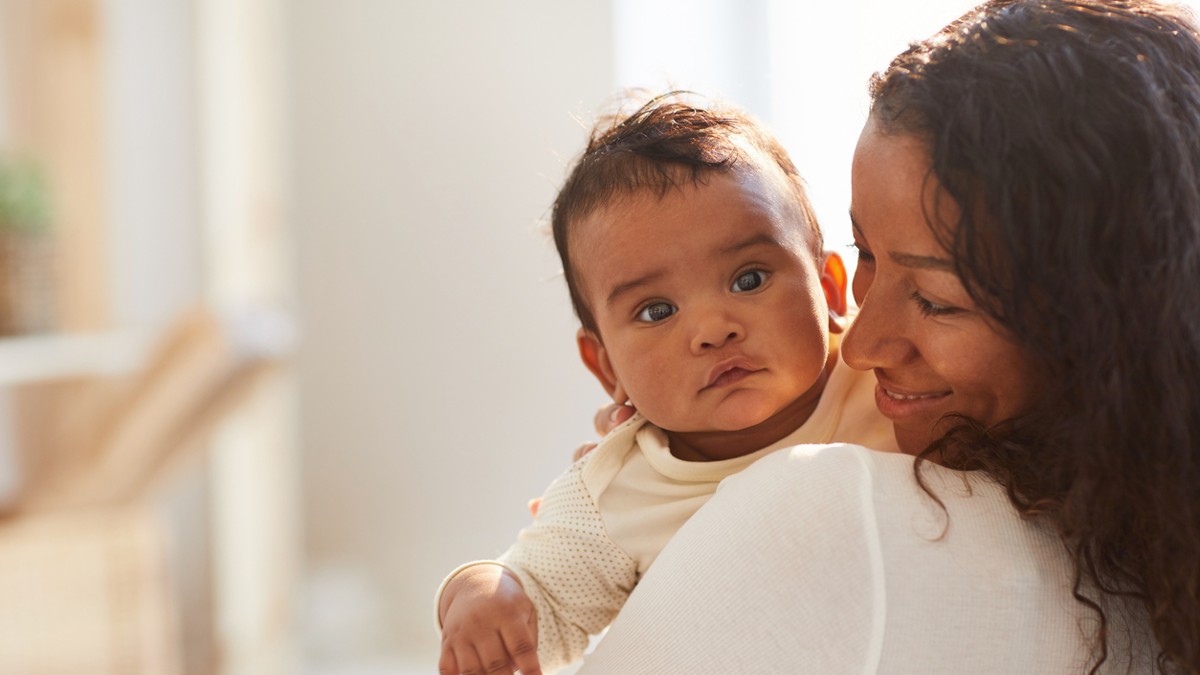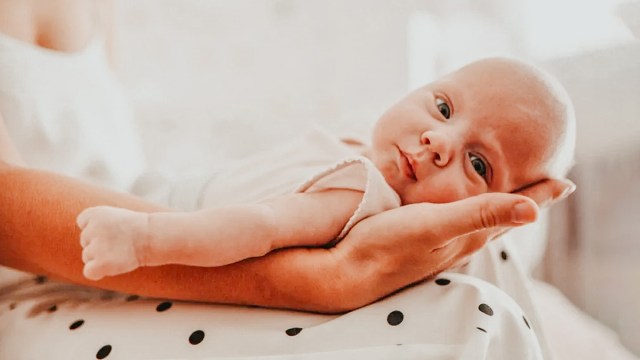You spend hours playing with your little one and looking lovingly into their eyes. If you’ve ever wondered “what can my newborn see?” when they gaze back at you, you’re not alone. Your child is developing, growing stronger daily, and moving through milestones at the speed of light. Their vision is no different. In their first year, they will go from learning how to focus their eyes to mastering hand-eye coordination. As a parent, understanding these milestones is important—and exciting—to track. Let’s take a closer look at what to expect with your kid’s eye development in the next 12 months.
What Can My Newborn See?
In these first few weeks your newborns’ retinas are developing and their pupils are widening, allowing them to see larger shapes, patterns, and some colors. They tend to focus on objects that are close to them—about 8 to 10 inches from their face. According to the American Academy of Ophthalmology (AAO), newborns are able to use their peripheral vision to sense things beside them, but their overall vision will still take months to develop.
In their first month, newborns are only able to see in black, white, and shades of gray, making them particularly sensitive to bright lights. That’s why it’s crucial if your infant is jaundiced that you use protective eyewear when using a biliblanket.
What does this mean for parents? Introducing your infant to black-and-white toys, books, and flashcards during this time can help them develop their optic nerves without overstimulating them. Bold, contrasting images are easier for them to see, and focus on, helping their eye muscles coordinate with the brain.
Your pediatrician will examine your baby’s eyes and check for anything that seems out of the ordinary during your first visits. They might refer you to an ophthalmologist for a more comprehensive exam if your baby was born prematurely or you have a family history of childhood eye disease.
What Babies Can See at 2-4 Months
At this age it’s totally normal for your baby’s eyes to appear crossed or even wander from side to side. Don’t panic! This is called pseudostrabismus, and it’s common in babies up to about 18 months old. As your child starts to grow into their features this usually goes away.
The American Optometric Association (AOA) notes that it’s around the two-month mark that babies are able to follow a moving object with their eyes. They will also start to focus on your face or the face of someone near them. If you do not notice this happening, talk with your pediatrician.
You can help your child build up their hand-eye coordination by using a rattle or toy and have them track it with their eyes. Encourage them to grab for objects and toys that are about eight to 12 inches out of reach.
Related: When Is the Right Time to Pierce a Baby’s Ears?

What Babies Can See at 5-8 Months
Blue? Hazel? Brown? It takes about a year for your baby’s eye color to settle, but any color changes will slow down around the six-month mark. During this time your baby’s depth perception is more fully developed, and they can see objects around them in more vivid detail. Their color vision is also developing and they might recognize your face from across a room and smile. It’ll make your heart swoon the first time it happens (ok, and all the other times too).
As your baby learns to crawl in these next few months, their vision will continue to grow stronger as they perfect their hand-eye coordination. Playing peekaboo and using mirrors is not only a great way to bond with your child, but these games help strengthen their vision and cognitive skills. Hanging a mobile in their crib also helps with hand-eye coordination.
A second eye screening should be done some time between the ages of six and 12 months. Your child’s pediatrician, or other health care professional, can explain what to expect during this exam.
What Babies Can See at 9-12 Months
Once your baby hits nine months, they should be able to judge distances and grasp for things with their thumb and forefinger. Ask your pediatrician for age-appropriate activities you can do with your baby to help develop their vision as they pass their first birthday.
When to Be Concerned
Remember, vision problems in babies are rare, however, there are times when problems may arise. Talk to your pediatrician if you notice your child has excessive tears, as this may be a sign of blocked tear ducts. Additionally, red or crusty eyelids could indicate an eye infection and should be treated right away.
Strabismus, or crossed eyes, is when the eyes do not line up properly and look in different directions. One eye may look straight ahead while the other eye turns in, out, up, or down. If your child’s eyes do not appear to align around four months, talk to your pediatrician about seeing an ophthalmologist.











